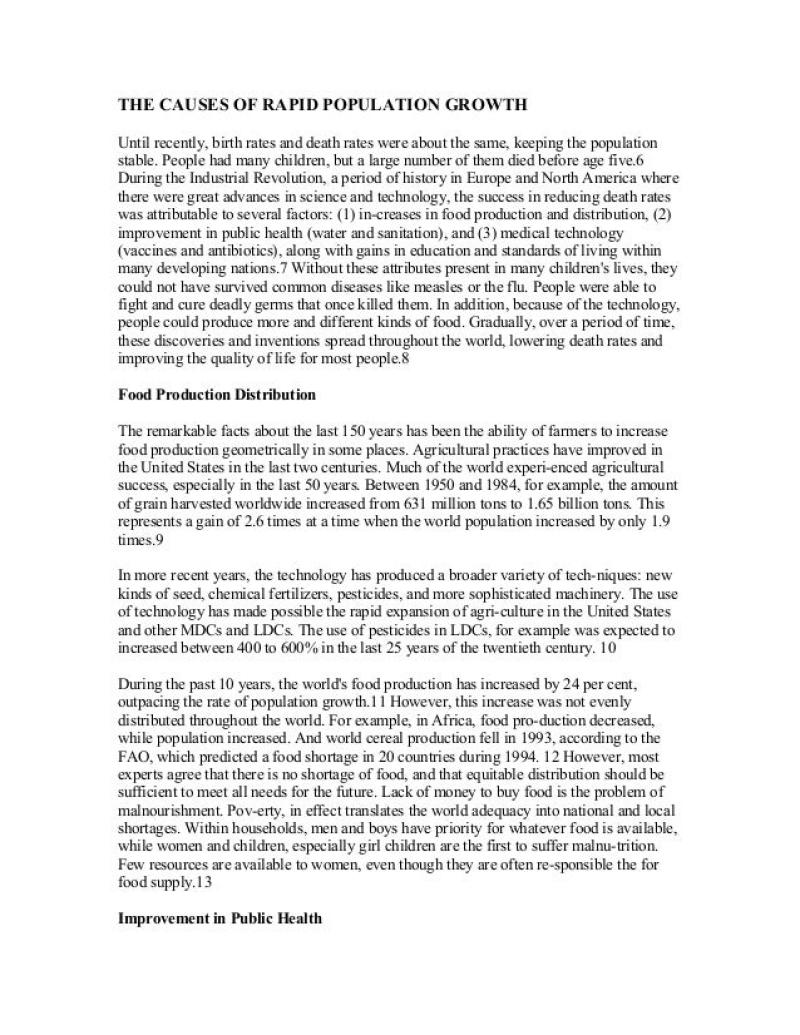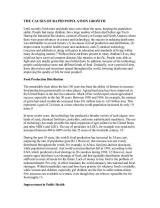What caused the rapid population growth in China?
China experienced rapid population growth in the 20th century, but in recent decades, the country has implemented policies to curb population growth. Historically, several factors contributed to China's rapid population growth, particularly in the mid-20th century. Here are some key factors:
High Birth Rates: Before the implementation of the one-child policy in 1979, China had high birth rates. Traditional cultural values, such as the importance of having male heirs to carry on the family name, contributed to larger family sizes.
Limited Access to Contraception: In the mid-20th century, access to contraception was limited in many parts of China. Lack of education and awareness about family planning methods also played a role in higher birth rates.
Improvements in Healthcare: Advances in healthcare, sanitation, and disease control led to a decline in mortality rates. Better healthcare meant that more children survived infancy and that adults lived longer, contributing to overall population growth.
Agricultural Practices: In rural areas, where a significant portion of the population lived, traditional agricultural practices often favored larger families. More hands in the family meant more help with farm work.
Cultural and Social Norms: Cultural expectations and social norms, especially the preference for male children, influenced family size decisions. Large families were often seen as a source of strength and security.
Economic Factors: In some cases, economic considerations contributed to larger families. Families in agrarian societies, for example, might have more children to ensure a stable labor force for farming.
Lack of Awareness: In some regions, there was a lack of awareness or education about the implications of rapid population growth. Families might not have fully understood the long-term consequences of having many children.
It's important to note that China recognized the challenges associated with rapid population growth and, in response, implemented the one-child policy in 1979 as a drastic measure to curb population growth. This policy, which restricted most urban couples to having only one child, was later relaxed and replaced with a two-child policy in 2015. In 2021, China further shifted to a three-child policy to address concerns related to an aging population and a shrinking workforce. These policy changes have had significant impacts on population dynamics in China.
What were the factors contributing to rapid population growth in China?
China's population experienced a period of rapid growth in the 20th century, reaching over 1 billion people by the 1980s. This growth was driven by a combination of factors, including:
Declining mortality rates: Advances in public health, sanitation, and medical care led to a significant decline in mortality rates, particularly among infants and children. This increased the average lifespan and contributed to a larger population base.
High fertility rates: Traditionally, Chinese families had many children due to cultural values, economic considerations, and a lack of reliable contraception. This high fertility rate, coupled with declining mortality rates, led to a rapid increase in the population.
Economic growth: China's economic growth in the 20th century, particularly after the reforms of the 1980s, provided improved living standards and increased access to resources. This made it more feasible for families to have more children and contributed to the population surge.
How did historical events impact the population surge in China?
Historical events played a significant role in shaping China's population trajectory. Some notable events that influenced the population surge include:
The Great Leap Forward (1958-1961): This economic and social campaign aimed to rapidly transform China into an industrialized nation. However, it led to widespread famine and economic disruption, resulting in a temporary decline in population growth.
The Cultural Revolution (1966-1976): This period of social and political upheaval disrupted many aspects of Chinese society, including healthcare and family planning efforts. This contributed to a slight increase in fertility rates during this time.
The One-Child Policy (1979-2015): This government policy aimed to limit population growth by restricting most families to having only one child. The policy was effective in slowing population growth, but it also led to social and ethical concerns, such as gender imbalances and forced abortions.
What societal changes influenced the rapid population increase in China?
Societal changes played a crucial role in shaping China's population dynamics. Some notable societal factors that contributed to the rapid population growth include:
Traditional values and beliefs: Chinese culture traditionally placed a high value on family and having many children. This cultural norm contributed to high fertility rates for generations.
Economic considerations: In rural areas, children were often seen as economic assets, providing labor for family farms or businesses. This economic incentive influenced family size decisions.
Lack of access to contraception: For much of the 20th century, reliable contraception was not widely available or affordable in China. This limited the options for family planning and contributed to the population surge.
In addition to these factors, the changing role of women in Chinese society also played a role in the population growth. As women gained more education and economic opportunities, their fertility rates began to decline. This trend, along with the implementation of the One-Child Policy, led to a gradual stabilization of China's population growth in the late 20th and early 21st centuries.


